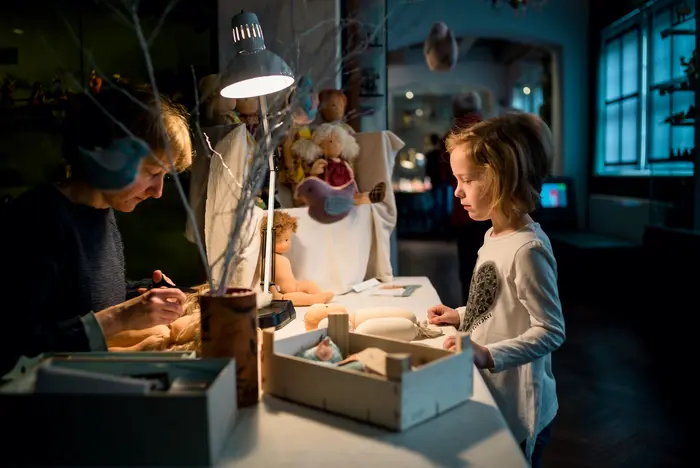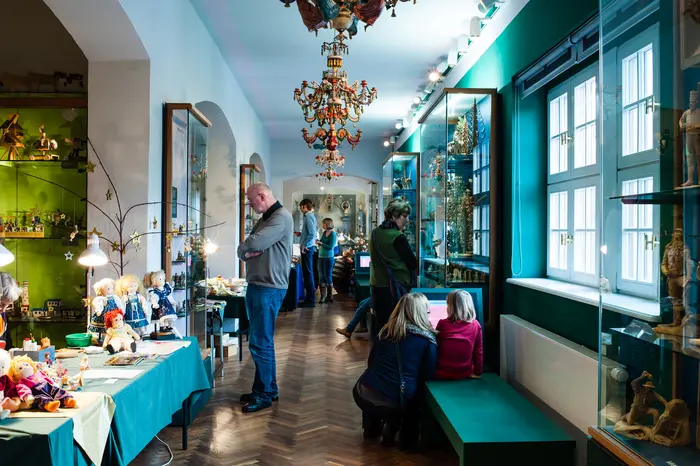[Translate to English:] Darunter fällt keinesfalls nur erzgebirgischer Weihnachtsschmuck
This comprises much more than the Ore Mountains Christmas decorations such as the miner’s figure or the angel; it also includes artifacts from the once-booming toy-making industry in Saxony as well as doll houses, traditional costumes of the Sorbs, who are protected as a minority, and the reconstructed living room of a damask weaver who lived and worked in tight quarters with his family. All of this can be enjoyed at the Jägerhof not far from the Golden Rider, the equestrian statue of August the Strong. A highlight of the permanent exhibition is a mechanical theatre from the first half of the nineteenth century that shows seven scenes from the Passion of Christ, from the Last Supper to Resurrection. These highly dramatic “moving pictures” were cinema before cinema was invented: Elias Augst once presented his invention in a barn and asked ten pfennigs for admission.














![[Translate to English:] Kunstgewerbemuseum gelber Kasten mit vier Füßen](/fileadmin/_processed_/2/5/csm_kg-dauerausstellung-ausstellungsteaser-portal_9f9692154c.jpg)



